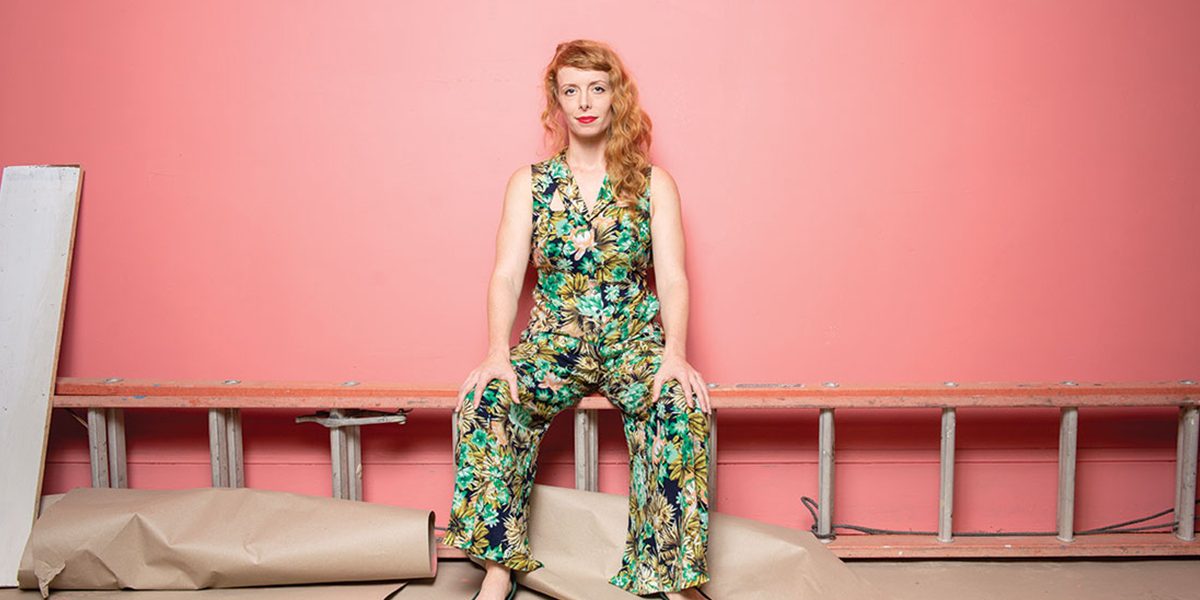Arts & Culture
Grand Experiment
Midsize indie art venue Le Mondo opens its doors this fall.
Much like the art that will be experienced here, the interior aesthetic of the soon-to-open, artist-owned space Le Mondo is experimental, nonlinear, and slightly unorthodox—a collage of various time periods, architectural styles, and visions housed under one roof (and, if things go according to plan, two more roofs by 2020).
An unearthed swatch of floral wallpaper from a bygone era is left intact near the entrance and will, perhaps, become a component of an art installation that incorporates live plants, echoing the abandoned buildings nearby whose hollow windows serve as frames for weeds that grow wild inside them. Antique tin ceiling tiles found elsewhere were brought to the 406 N. Howard St. building for decorative appeal. A long, wooden bar with two large mirrors on the wall behind it was gifted by a contractor who found it in a building being rehabbed on Calvert Street. Who knows how many conversations were shared on it over decades of drinks, and how many more will come forth when the bar is given new life as a nightly meeting spot and arts hub here in the historic Howard and Lexington shopping district, where the building originally opened as The Strand movie theater in 1916.
After a trial run from summer through fall of 2017 that included art exhibitions, concerts, and dance and theater performances, the long-awaited grand opening of the first of three Le Mondo buildings will come this fall, complete with the aforementioned bar, a performance space that can be manipulated to serve both large-scale and intimate productions, and 10-12 artist studios.
The arts incubator, three years in the making (so far) and estimated to cost roughly $4 million upon completion, was financed through private and public funding and loans. It will later include two additional adjacent buildings, which will house a 100-seat black box theater, a headquarters for one or more arts groups, artist apartments, and a cafe. A small grassy lot—where another building once stood but burned to the ground in 2015—will remain a green space.
Le Mondo is the grand vision of Carly Bales, Evan Moritz, and Frederick Gerriets (another founder, Ric Royer, was fired after several women accused him of harassment and abuse). All three remaining founders have deep roots in the DIY arts scene here—Bales as the brains behind EMP Collective, and Moritz and Gerriets as creators of Annex Theater—and all of them desire a secure foundation for that scene to thrive.
“There’s a real need for an affordable, flexible space for developing new work,” Bales says. “We’ve been seeing a decrease in accessible spaces for the type of work we want to see flourish.”
Annex Theater, which will use Le Mondo as its permanent venue, has moved “from space to space to space—warehouses and storefronts,” Moritz says. “The idea is to have a bunch of groups team up and share a long-term building . . . a midsized venue with a bar and diverse programming.”
Bales spent several years immersed in the Washington, D.C., arts scene as an actor but ultimately made Baltimore her home in 2013 because of the ability—and affordability—to produce work here that takes risks rather than what she calls “fear-based” work that you’re more likely to find in D.C.
“Economics plays a lot into the psyche of an experimental arts community. If it’s more accessible financially, you have an opportunity to fail and use that for growth, rather than it being a detrimental setback to your career,” she says.
Le Mondo will serve as the Charm City Fringe Fest headquarters in November, one of the first events to christen the space.
Ultimately, Bales, Moritz, and Gerriets see Le Mondo as a catalyst that can spur a revitalization of the whole block. Across the street, for instance, Current Space gallery, which has leased its city-owned property on a month-to-month basis since 2004, is now buying its building as well as the large, three-story building to the south of it, and developers’ interest has already spiked in buildings on the block that have lay dormant for years.
“We fell in love with the idea of being here and creating a footprint,” Bales says. “You get this feeling of history on this street. There’s a spirit to the area that’s really sort of beautiful, and there’s so much untapped potential.”
